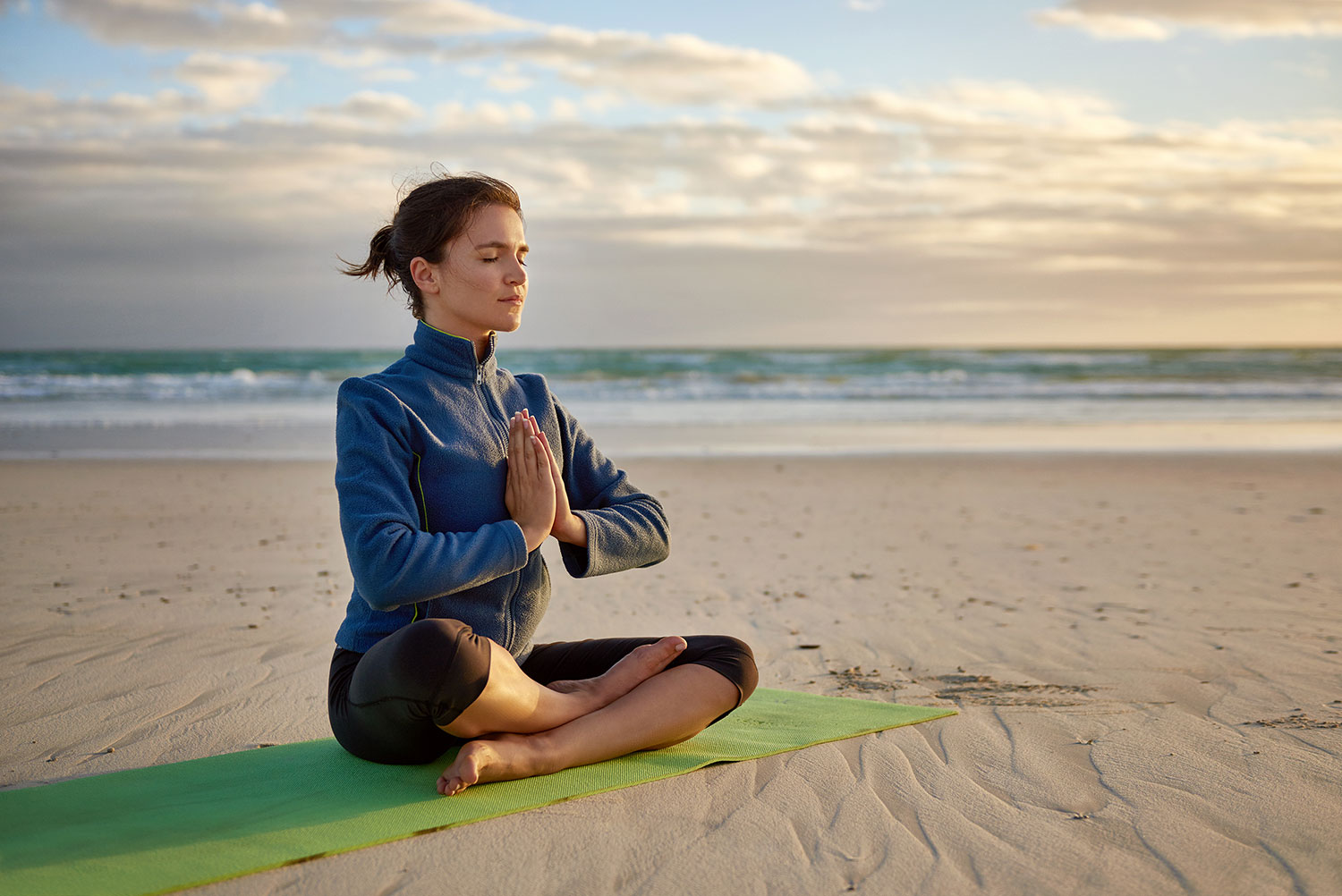Breathing techniques can play a significant role in managing stress and improving overall well-being. Many people overlook the power of their breath, yet simple exercises can help calm the mind and enhance relaxation. Learning just a few effective methods can give you tools to better handle anxiety and promote a sense of peace in your daily life.
Incorporating breathing exercises into your routine can be easy and accessible. From enhancing sleep quality to reducing tension, these techniques offer various benefits you can experience wherever you are. With practices suitable for everyone, you can find the right approach to support your mental and physical health.
1)Diaphragmatic Breathing
Diaphragmatic breathing focuses on using your diaphragm efficiently. This technique allows you to take deeper breaths and improves the quality of your breathing.
To practice, find a comfortable position, either lying down or sitting. Place one hand on your chest and the other on your abdomen. Breathe in deeply through your nose, making sure your stomach rises while your chest stays still.
Exhale slowly through your mouth. You should feel your abdomen fall. This method decreases how hard you have to work to breathe. It helps reduce stress and may lower anxiety levels.
With practice, you can do diaphragmatic breathing anywhere. It’s a valuable skill for relaxation and can improve your overall well-being.
2) Box Breathing
Box breathing, also known as square breathing, is a calming technique that can help you manage stress. It involves a simple pattern of inhaling, holding, exhaling, and holding your breath again, each for four counts.
To practice, start by inhaling through your nose for four seconds. Then hold your breath for four seconds. Next, exhale slowly through your mouth for another four seconds. Finally, hold your breath again for four seconds before repeating the cycle.
This technique activates the parasympathetic nervous system, which helps you relax. By focusing on your breath, you can distract your mind from stressful thoughts.
Box breathing is easy to learn and can be done anywhere. Whether you’re at home or in a busy place, it’s a useful tool for calming your mind and body. Many people find it helps them regain focus after a stressful event. Regular practice can improve your overall well-being and help you feel more centered.
3) 4-7-8 Breathing Method
The 4-7-8 breathing method is a simple technique designed to help you relax. It was created by Dr. Andrew Weil. This method can be particularly useful for reducing stress and improving your sleep.
To practice this technique, start by sitting comfortably. Inhale deeply through your nose for a count of four. Hold your breath for a count of seven. Then, exhale slowly through your mouth for a count of eight.
Repeat this cycle four times. Many people find that this helps them feel calmer quickly. Your body responds to this method by activating the relaxation response.
This technique can be practiced anytime you feel anxious or have trouble sleeping. It may also be beneficial for heart health and overall well-being. With regular practice, you might notice improvements in your ability to relax.
4) Alternate Nostril Breathing
Alternate nostril breathing is a simple yet effective technique rooted in yoga. It involves inhaling and exhaling through one nostril at a time. This practice can help you manage stress and anxiety.
To begin, sit comfortably and relax. Close your right nostril with your thumb and inhale deeply through your left nostril. Then, close your left nostril with your ring finger and open your right nostril to exhale. Continue this pattern, alternating nostrils.
Practicing this method can bring a sense of calm. It is also said to improve mental focus and promote a feeling of balance. Many people find it helpful during busy or stressful times.
You can practice alternate nostril breathing for a few minutes each day. Try to focus on your breath and let go of distractions. With regular practice, you might notice a more relaxed state of mind.


5) Buteyko Method
The Buteyko Method focuses on controlled breathing, which can help with asthma and other respiratory issues. Developed in the 1950s by Ukrainian doctor Konstantin Buteyko, it emphasizes breathing through the nose rather than the mouth.
You practice this technique by taking shallow breaths and holding your breath briefly after exhaling. This aims to reduce the amount of carbon dioxide your body loses. As a result, it can help improve your oxygen use and reduce anxiety.
Many people find this method useful for managing asthma symptoms. It may lead to less reliance on inhalers, although it is not a substitute for prescribed medication. You should continue using your inhaler as needed.
Some users report increased energy and better overall health. The Buteyko Method encourages awareness of your breathing patterns. This awareness can be beneficial for relaxation and stress management.
6) Resonant or Coherent Breathing
Resonant or coherent breathing is a simple technique that can benefit your well-being. This method focuses on breathing at a rate of about five to six breaths per minute.
To practice, inhale slowly for five to six seconds. Then, exhale for the same duration. This helps create a rhythm that calms your mind and body.
This technique can be useful when you feel stressed or anxious. By controlling your breath, you may activate your body’s natural relaxation response.
Many people find that this type of breathing improves their mood. It can also help if you are dealing with low energy or focus issues.
You can use this technique anytime, anywhere, making it a practical tool for daily life. Regular practice can lead to improved mental clarity and emotional balance.
Benefits of Breath Control
Breath control has significant benefits that can impact both your mind and body. By practicing specific techniques, you can achieve improved mental clarity and enhanced physical performance.
Improved Mental Clarity
Controlling your breath can directly enhance your focus and mental clarity. When you take slow, deep breaths, you increase oxygen flow to your brain. This can sharpen your thinking and improve your ability to concentrate.
Practicing deep breathing techniques can also help reduce anxiety. By calming your mind, it becomes easier to tackle tasks and make decisions. Regular breath control exercises can lead to more stable emotions, allowing you to approach challenges with a clear head.
A simple technique to try is the 4-7-8 method. Inhale through your nose for 4 seconds, hold your breath for 7 seconds, and exhale through your mouth for 8 seconds. This practice can quickly center you and improve mental focus.
Enhanced Physical Performance
Good breath control plays a crucial role in physical performance. By using techniques like diaphragmatic breathing, you can maximize lung capacity and improve stamina. This allows you to engage in physical activities longer and with more energy.
In addition, controlled breathing helps to manage your heart rate and keeps blood pressure stable. This balance is beneficial during exercise, reducing fatigue and promoting quicker recovery.
Athletes often use breath control strategies to enhance their performance. For instance, synchronized breathing during workouts can optimize energy use and improve endurance.
Incorporate breath control into your routine for a powerful impact on both mind and body. By focusing on your breath, you create a strong foundation for improved overall well-being.
Scientific Basis for Breathing Exercises
Breathing exercises are not just about relaxation; they also have a strong scientific foundation. Research shows how these techniques can impact your nervous system and improve cardiovascular health.
Impact on the Nervous System
Breathing exercises can significantly affect your autonomic nervous system, which controls involuntary bodily functions. By practicing techniques like deep breathing, you can stimulate the parasympathetic nervous system.
Key Benefits:
- Reduced Stress: Deep breaths help lower cortisol levels, the stress hormone.
- Enhanced Relaxation: Slower breathing patterns promote a state of calmness.
- Anxiety Relief: Studies show that structured breathing can effectively reduce symptoms of anxiety.
When you focus on your breath, it sends signals to your brain, encouraging relaxation. This can help manage stress-related issues effectively.
Influence on Cardiovascular Health
Breathing exercises can also benefit your heart and circulation. Regular practice may lead to lower blood pressure and improved heart rate.
Important Effects:
- Improved Blood Flow: Better oxygen flow aids overall cardiovascular health.
- Pain Management: Controlled breathing can help ease discomfort.
- Stable Blood Glucose Levels: Some studies suggested a link between deep breathing and stable glucose levels.
Consistency in practicing these techniques can improve your cardiovascular system by increasing the efficiency of oxygen use in your body.




